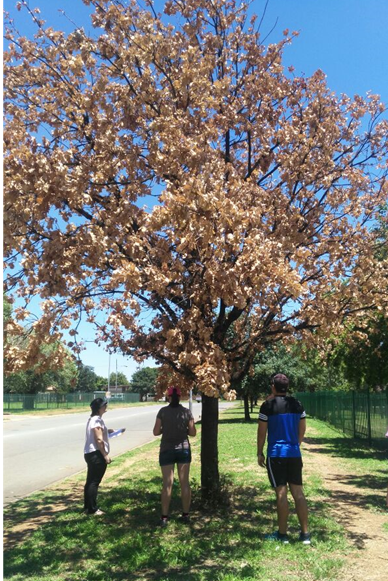Walking down the historical oak avenue in Potchefstroom brings about a feeling of calmness and serenity. The first oak trees were planted in 1910, but now, 108 years later, Potchefstroom’s most prized heritage is slowly dying.
“The research done by urban ecologists at the North-West University (NWU) shows that the trees are dying due to a lack of water,” says Prof Sarel Cilliers from the School of Biological Sciences. “These water-stressed trees are also prone to scale infestations which cause further die-back.”
The NWU’s Forensic Accounting honours students recently conducted a survey to determine the current state of the trees.
According to the survey there are currently 747 trees in the oak avenue, which stretches from the Potchefstroom Dam in the north of the city, up to the Agricultural College in the south. Of these trees nine are dead, 20 have scale infestations, 114 have been removed and 19 have been replanted.
The NWU, Heritage Potchefstroom, the Parks division of JB Marks municipality, and a number of organisations and businesses have come together to try and preserve the trees that are still alive and replace the ones that are dead.
According to Prof Cilliers, property owners can help preserve the trees by ensuring that they receive enough water. “Residents are urged to regularly water the trees and to reduce the paved surface area in their gardens so that rain water can infiltrate the soil. Soil compaction also needs to be reduced by not parking cars under these trees,” he says.
More Oak trees will soon be planted to help preserve this important part of Potchefstroom’s heritage.
Members of the public who are willing to care for the new oak trees and would like to have them planted on their sidewalks can contact Lennie Gouws at lenniegouws@gmail.com for more information.

Potchefstroom’s historical oak avenue is in danger. Research done by urban ecologists at the NWU shows that the trees are dying due to a lack of water.
